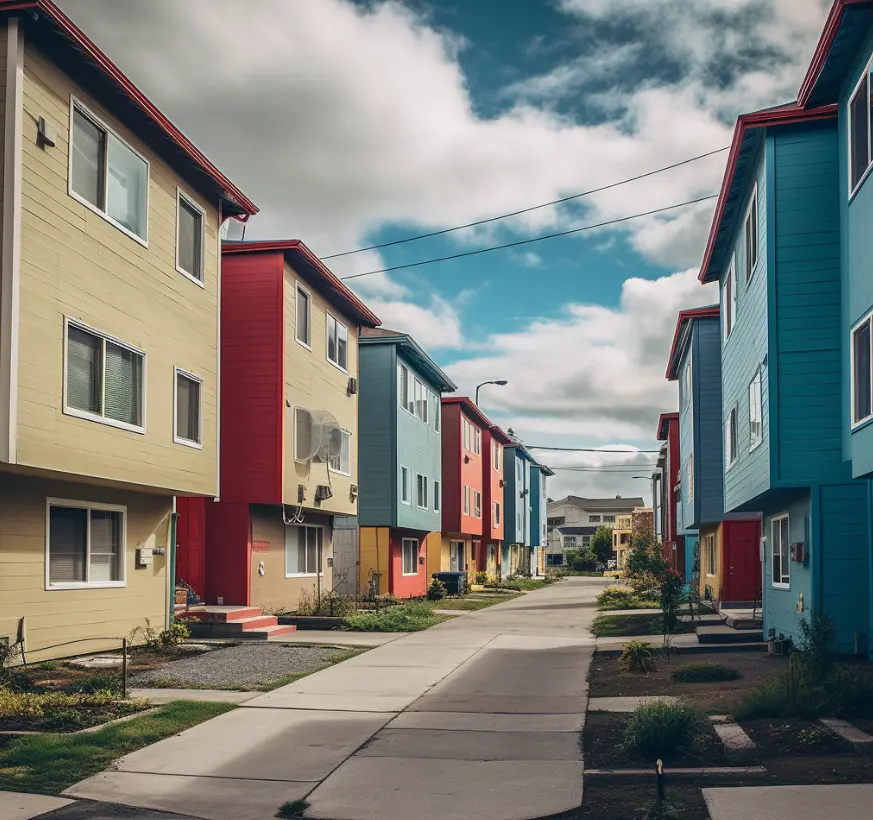Table of Contents
20 steps on how to get low income housing fast
1. Determine your eligibility for low-income housing:
- Check income, citizenship, and family size requirements.
- Refer to HUD website for income limits.
2. Locate your local Public Housing Agency (PHA):
- Use the Housing Authority Lookup Tool to find your nearest agency.
- Contact them for application details.
3. Check the waiting list status for the PHA:
- Inquire about waiting list status and expected wait times.
- Consider applying at multiple PHAs if lists are long.
4. Gather necessary documents:
- Collect proof of income, citizenship, and family size documents.
- Have them ready before starting the application process.
5. Complete the application form provided by your local PHA:
- Fill out the housing voucher application form accurately.
- Check if the form is available online or in person.
6. Search for private organizations or landlords with reduced rent:
- Look for landlords or organizations offering reduced rent.
- Contact your local PHA for a list of such providers.
7. Search online for affordable housing options:
- Explore websites like Affordable Housing Online, Social Serve, and GoSection8.
- Search for affordable housing in your area.
8. Use the Housing Choice Voucher Program (Section 8):
- Utilize this federal program for rental assistance.
- It can cover all or part of your rent.
9. Find an apartment with reduced rents using a map:
- Access the HUD website’s map for affordable housing options.
- Search for apartments with reduced rents in your area.
10. Apply for Public Housing for affordable apartments:
- Public Housing offers affordable options for low-income families, the elderly, and those with disabilities.
- Administered by local PHAs.
11. Contact a HUD-approved housing counseling agency:
- Reach out for housing-related advice and information.
- Services may include credit counseling and more.
12. Look for subsidized rental housing:
- Government-subsidized housing offers reduced rents for low-income tenants.
- Contact your local PHA or search online for options.
13. Contact your local PHA if you’re a landlord:
- Landlords interested in renting to voucher holders should contact their local PHA.
- Learn about becoming a participating landlord in the Housing Choice Voucher Program.
14. Ensure you meet eligibility requirements:
- Verify that you meet income, citizenship, and family size requirements.
15. Use the Housing Authority Lookup Tool:
- Find your local PHA using the HUD website’s tool.
- Connect with them for application information.
16. Fill out the housing voucher application form:
- Complete the application form provided by your local PHA accurately.
17. Begin searching for a rental unit meeting HUD standards:
- After receiving your housing voucher, search for a unit meeting HUD’s housing quality standards.
- These standards cover issues like lead-based paint and heating.
18. Ensure you have all necessary documentation:
- Prior to applying for low-income housing, gather income, citizenship, and family size documents.
19. Apply at multiple PHAs if needed:
- Apply at more than one PHA to increase your chances of approval.
- Verify eligibility for each PHA before applying.
20. Start your low-income housing search early:
- Initiate your search as soon as possible, as the process may take time.
- Secure affordable and safe housing with minimal living costs efficiently.
How to prepare for a low income housing interview?
1. Gather all necessary documentation:
- Ensure you have required documents like proof of income, citizenship, and family size.
- Verify the specific documentation needed with the housing authority.
2. Dress appropriately:
- Wear professional and conservative attire to convey seriousness and commitment.
3. Be on time:
- Arrive early at the interview location to accommodate unexpected delays.
- Punctuality demonstrates responsibility and reliability.
4. Research the housing authority:
- Familiarize yourself with the housing authority’s policies and procedures.
- This knowledge enables you to ask informed questions during the interview.
5. Practice answering common interview questions:
- Review common interview questions and practice your responses.
- This preparation boosts your confidence during the interview.
6. Be honest:
- Answer all questions truthfully and accurately.
- Providing false information can lead to disqualification from the program.
7. Be polite and respectful:
- Maintain a polite and respectful demeanor towards the interviewer and staff.
- Demonstrating professionalism and courtesy is important.
8. Ask questions:
- Inquire about any unclear information or policies during the interview.
- This showcases your engagement and interest in the program.
9. Follow up after the interview:
- After the interview, send a thank-you message to the housing authority.
- Inquire about the status of your application to stay informed.
By following these steps, you can effectively prepare for your low-income housing interview and increase your chances of approval for affordable housing. Remember to maintain honesty, professionalism, and respect throughout the process.
What are some tips for finding low income housing in a specific area?

1. Contact local affordable housing authorities:
- Reach out to state and local housing authorities and non-profit housing services.
- Their programs may be specific to your location and cater to low- to moderate-income individuals and families.
2. Search for subsidized housing:
- Explore state or federally-funded subsidized housing options.
- Contact your local Public Housing Authority (PHA) or search online for such housing.
3. Use rental housing websites:
- Utilize rental housing websites like Zillow, Rent.com, and Apartment Finder.
- Filter your search by location and price range to find affordable options.
4. Consider alternative housing options:
- While waiting for low-income housing, explore alternatives without waiting lists.
- Consider sharing a living space with family or friends.
5. Look for rental assistance for specific groups:
- If you’re a veteran or have a disability, seek special rental assistance programs.
- These programs may provide additional resources for finding affordable housing in your area.
6. Research the housing quality:
- Investigate the quality of housing in your chosen area.
- Check if it meets HUD’s housing quality standards, ensuring safety and essentials like lead-free paint and proper heating and plumbing.
By following these steps, you can navigate the process of finding low-income housing in a specific area. Stay informed, be persistent, and explore all available options to secure affordable and safe housing with a minimal cost of living.
What are some common challenges when applying for low income housing?
1. Waiting lists:
- Many low-income housing programs have long waiting lists, delaying the process of obtaining affordable housing.
2. Eligibility requirements:
- Eligibility for low-income housing is typically based on income, citizenship, and family size. Meeting these requirements can be challenging for some applicants.
3. Limited availability:
- Affordable housing units are often limited, making it difficult to find a suitable place to live.
4. Insufficient documentation:
- Some applicants struggle to provide all the necessary documentation required to apply for low-income housing.
5. Poor credit history:
- Applicants with a poor credit history may face difficulties in obtaining low-income housing.
6. Discrimination:
- Some applicants may experience discrimination based on factors such as race, ethnicity, or other characteristics.
7. Lack of information:
- Applicants may not be aware of all available low-income housing programs or may not know how to apply for them.
8. Insufficient funding:
- Low-income housing programs may not have enough funding to meet the demand for affordable housing.
9. Poor housing quality:
- Some low-income housing units may be in poor condition, affecting the health and safety of residents.
10. Limited options:
- Applicants may have limited choices for affordable housing in their desired location and may need to compromise on certain amenities or features.
Despite these challenges, there are resources and assistance available to help applicants navigate the process of obtaining low-income housing. Staying informed, being persistent, and seeking out available support can increase the chances of finding affordable and safe housing with minimal living costs efficiently.
Conclusion
In the quest for obtaining low-income housing quickly, it’s essential to navigate a complex landscape of eligibility, applications, interviews, and potential challenges. By following a structured approach, including determining eligibility, connecting with local housing authorities, and being well-prepared for interviews, individuals can significantly enhance their chances of securing affordable housing. While common challenges like waiting lists and limited availability may arise, perseverance and resourcefulness are key. Ultimately, the goal is to find safe and affordable housing that allows individuals and families to thrive, even in the face of obstacles.

I don’t think the title of your article matches the content lol. Just kidding, mainly because I had some doubts after reading the article.
Can you be more specific about the content of your article? After reading it, I still have some doubts. Hope you can help me.
Thanks for sharing. I read many of your blog posts, cool, your blog is very good.